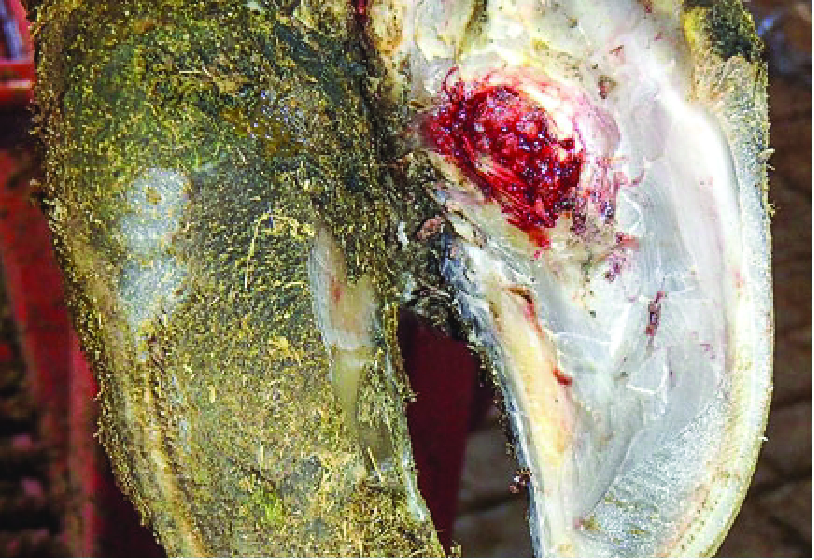Most beef cows in the U.S. never see a hoof trimmer, nor do they need one. Our beef cows have been naturally selected for great feet and legs and don’t require much maintenance. Cattle on pasture have the ideal substrate to walk on: forgiving topsoil with adequate moisture, cushion, and minimal abrasiveness. This combination eliminates most of the common hoof health issues, but some problems can still arise. Common hoof issues are overgrown toes, twisted claws, sinking heels, hairy heel warts, sand cracks, and traumatic injury. If not dealt with in a timely manner, the problems can lead to severe lameness, pain, musculo-skeletal injuries, and production losses.
We suggest that you observe your herd at least twice a year to assess hoof health. This can be done in the spring before turning cattle out to pasture and in the fall when cattle are brought up for chute work. Identifying hoof issues early makes treating the problem easier and allows the animal to return to being sound.
Extra attention should be given to your herd bulls before turnout. Bulls are large and place an extreme amount of pressure on their hooves when jumping and landing. Most of the hoof issues in bulls are abscesses and ulcers in the claws. These lesions are due to imbalanced claws and repetitive concussive forces. The treatment for these conditions are corrective trimming and stall rest, which may take them out of the pasture for the remainder of the breeding season.

